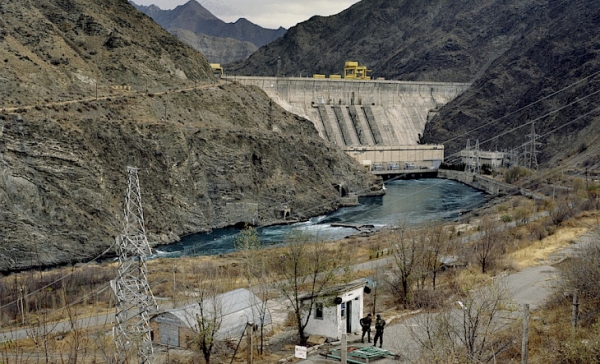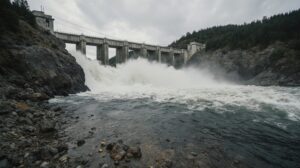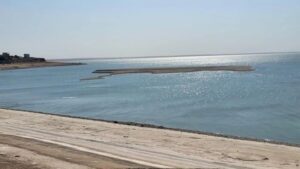In Bishkek, Kyrgyzstan, the first national consultations on the socio-ecological assessment of the Kambarata HPP-1 construction project were held recently. The event, organized by the Kyrgyz Ministry of Energy, was attended by representatives from the public environmental coalition Rivers without Boundaries, alongside other stakeholders. The consultations aimed to shed light on the development of the largest planned hydroelectric power station in the Syr Darya basin. However, the discussions left many questions unanswered, raising concerns about the transparency and inclusiveness of the project planning process.

Background of Kambarata HPP-1
The Kambarata HPP-1 project involves constructing a 256-meter dam on the Naryn River, a tributary of the Syr Darya, and a hydroelectric power station with a total capacity of 1860 MW. The project is envisioned to address Kyrgyzstan’s growing energy demands and enhance regional water and energy management. Despite its potential benefits, the project has sparked concerns regarding its socio-environmental impacts, particularly given its transboundary nature and the large population—estimated at 4mn—living downstream in Kyrgyzstan, Uzbekistan, and Kazakhstan.
Limited Information Shared at Consultations
The Ministry of Energy provided an overview of the project’s current status, including a preliminary timeline for its environmental and social assessment, expected to be completed by mid-2025. However, the consultations lacked substantive materials, with only a general presentation offered for public discussion. This absence of detailed data raised significant concerns among participants about the project’s potential impacts and the adequacy of the consultation process.
Alexander Kolotov, Regional Director of Rivers without Boundaries, questioned the inclusiveness of the consultations, particularly regarding their transboundary implications.
“Is it planned to hold public consultations in neighboring countries, Kazakhstan and Uzbekistan? Will the public be allowed to discuss the draft technical specifications for the socio-ecological assessment? Will the assessment of the cumulative impact of Kambarata HPP-1 be discussed, including its operation in the mode of water and energy regulation of the entire cascade of HPPs?” he asked, emphasizing the need for broader regional engagement.
Key Issues Raised by Stakeholders
Participants voiced various pressing concerns during the event, including:
- Compensation for Loss of Pasturelands: How will local communities be compensated for losing vital grazing areas submerged by the project’s reservoir?
- Seismic Risks: Will seismic activity at the construction site be addressed through advanced computer modeling to ensure safety?
- International Obligations: How does Kyrgyzstan plan to meet its commitments under the Aarhus Convention, which guarantees public participation in environmentally significant decision-making, and the Espoo Convention, which regulates transboundary environmental impacts?
- Cultural Heritage Preservation: What measures will be taken to identify and protect cultural heritage sites in the flood zone?
While the Ministry of Energy assured participants that these aspects would be addressed in the socio-ecological assessment, specific answers and a clear consultation plan were absent.
Calls for Greater Transparency and Inclusion
Environmental experts and civil society groups stressed the importance of open and inclusive dialogue on the project’s potential impacts. Evgeny Simonov, International Coordinator of Rivers without Boundaries, highlighted the need for early-stage discussions on water resource management in the Syr Darya basin.
“The commissioning of the Kambarata HPP-1 can significantly change the water and energy balance of the region. About 4 million people live downstream from the proposed HPP in three countries, and each of them should have the opportunity to take part in the discussion of the proposed megaproject,” Simonov stated.
The socio-ecological assessment, a crucial step in understanding the project’s full implications, is expected to conclude by the summer of 2025. However, the absence of a detailed plan for future consultations and the lack of transparency in presenting initial findings have fueled skepticism among stakeholders.




